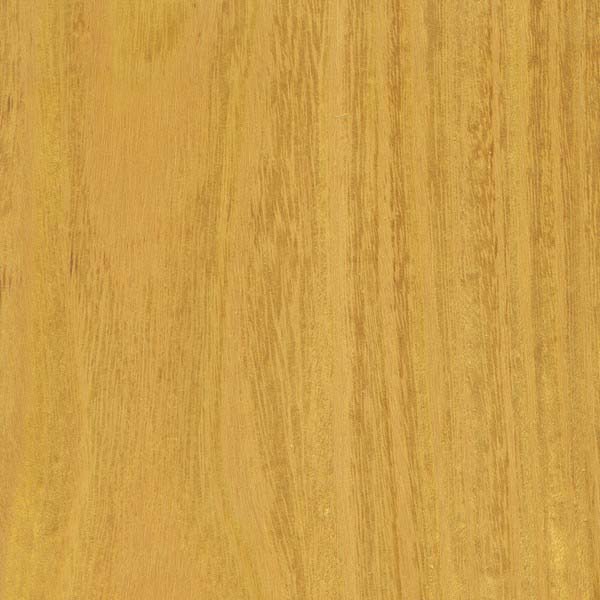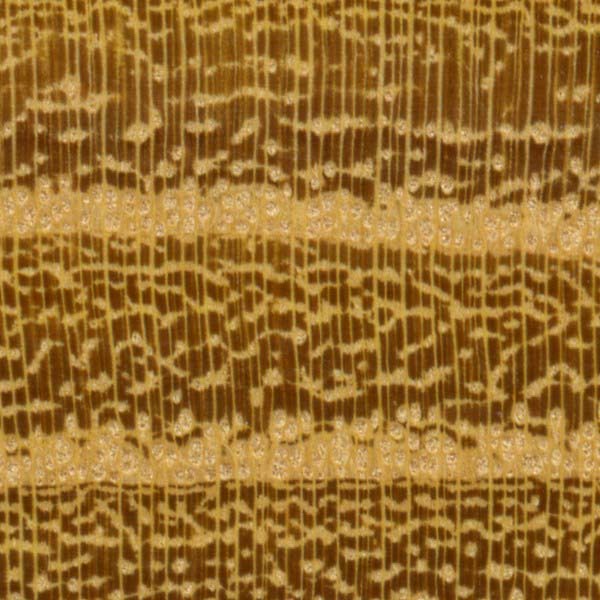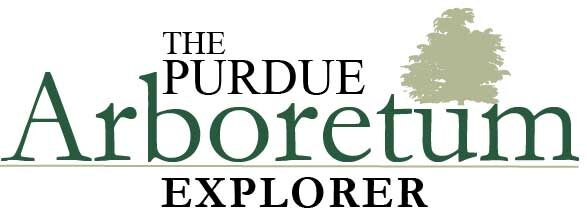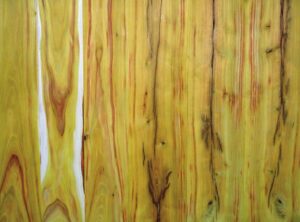Maclura pomifera
Summary
Osage orange, or bois d’arc or bow-wood, is a native species of southern Arkansas, southern Oklahoma, and northeastern Texas. The wood is ring porous, so it has a coarse grain pattern. The pores are completely filled with tyloses and extractives, which causes the pores to be more subdued then others of comparable size. The sapwood is narrow and yellowish white while the heartwood is bright yellow when first cut and ages to a darker color.
History
Osage orange was extensively planted in hedgerows and the treeless prairie before the development of barbed wire. The seedlings were planted close together, and the tops sheared to fence height, creating an impenetrable barrier. The wood was subsequently used for fence posts, wagon wheel rims, and hubs because of its strength. The tree prefers rich, moist soils and develops an extensive root system. The tree forms softball size green balls hence the term hedge apple. The young tissue and hedge apple produce a milky sap. The largest reported tree is 8.5 feet in diameter at 4½ feet above the ground.
Color & Texture
Heartwood is golden to bright yellow, which inevitably ages to a darker medium brown with time: primarily due to exposure to ultraviolet light.
Anatomical and Microscopy


Ring-porous; large to very large earlywood pores 2-3 pores wide, small latewood pores in clusters and tangential bands; tyloses extremely abundant; growth rings distinct; narrow to medium rays visible without lens, spacing normal; parenchyma vasicentric, lozenge, and confluent.
Wood Properties
- Workability
- Difficult due to its hardness
- Strength
- Excellent mechanical or strength properties
- Steam Bending
- No information available
- Drying
- No information available
- Shrinkage
- Close to average shrinkage
- Decay
- Moderate to very resistant to decay
Products
Fence posts, dye, archery bows, musical instruments, turnings, and other small specialty wood items.

